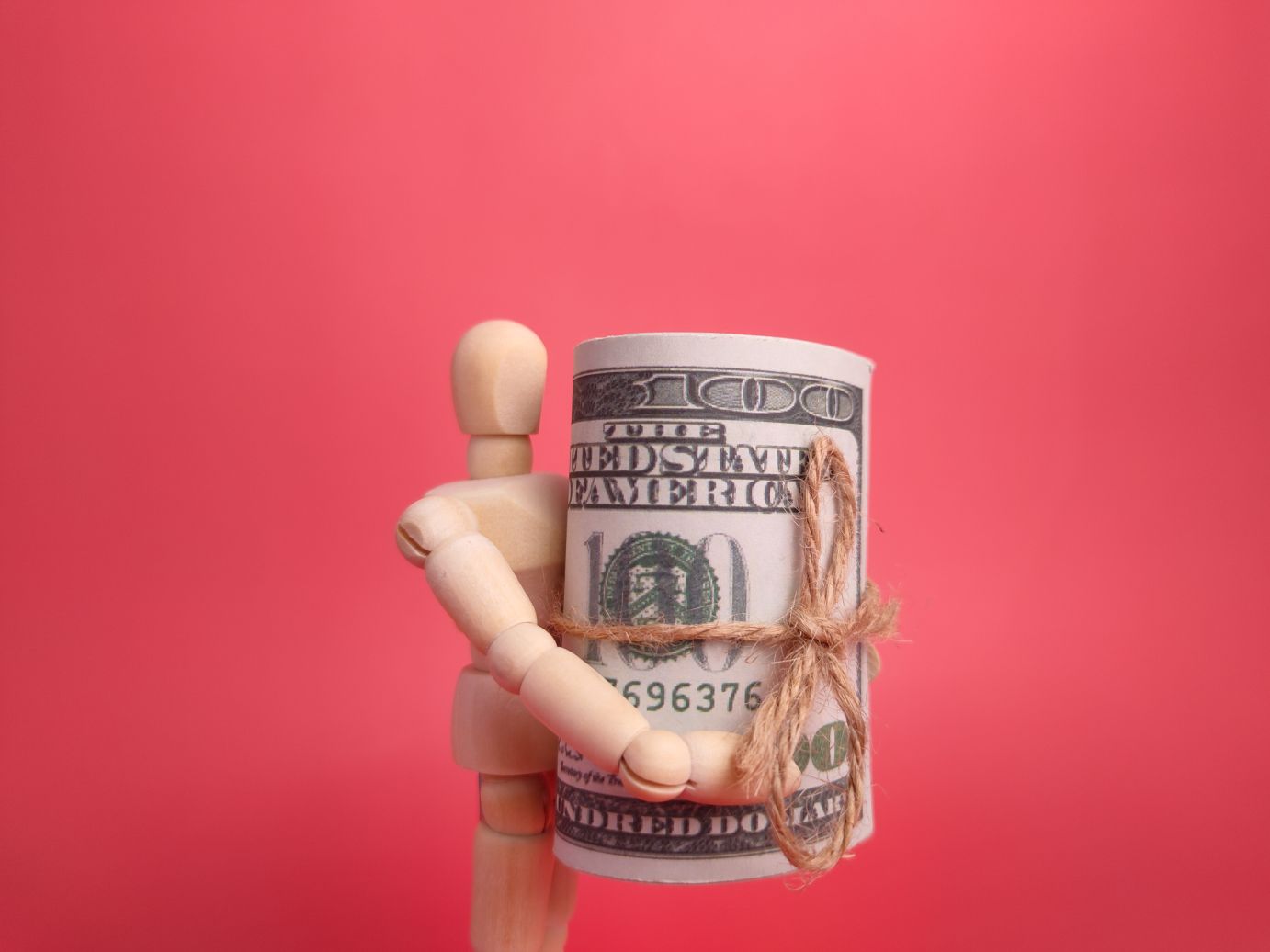If you’ve ever worked in sales or have friends who do, you might have heard the term “sales spiff” tossed around. It sounds like a strange word, but it’s actually a common and powerful tool in the sales world. Let’s break it down in simple terms.
What is a Sales Spiff?
A sales spiff, also known just as a “spiff,” is a short-term incentive given to salespeople to encourage them to sell a specific product or reach a particular sales goal. It’s like a little extra reward on top of their regular pay or commission. Think of it as a bonus for doing a great job in a specific area.
The meaning of spiff has evolved throughout the years. Some marketers define it as a sales performance incentive fund, while others see it as sales program incentive funds. Whichever the case, they all refer to one concept and it’s incentivizing performers.
The History of SPIFFs
The concept of SPIFFs has an interesting history that reflects the evolving strategies in sales and marketing. Here’s a look at how SPIFFs came to be and how they have developed over time:
19th Century Origins:
The term “spiff” is believed to have originated in the British retail sector during the late 19th century. It was used to describe a small, immediate bonus given to shop assistants for selling specific items, especially slow-moving or high-margin products. The idea was to incentivize employees to promote certain goods more aggressively.
Early 20th Century:
The concept of SPIFFs began to spread beyond the UK, particularly to the United States and other parts of the world. During this time, the retail industry saw significant growth, and companies started to adopt various incentive programs to boost sales.
Post-World War II:
The economic boom following World War II led to increased consumerism and a greater focus on sales strategies. Companies began to formalize SPIFF programs, offering more structured and varied incentives to their sales teams. This period saw a shift from purely monetary rewards to a mix of cash and non-cash incentives.
1970s and 1980s:
With the rise of the corporate culture, SPIFFs became more sophisticated and widely adopted across different industries, not just retail. Businesses started using SPIFFs to drive specific sales behaviors, such as promoting new products, clearing out old inventory, or meeting quarterly targets.
1990s:
The technology boom led to new ways of tracking and managing sales performance. Companies began to use software to monitor sales activities and automatically distribute SPIFFs based on real-time data. This era also saw an increase in the variety of SPIFFs, including travel rewards, merchandise, and professional development opportunities.
21st Century:
In today’s business environment, SPIFFs are an integral part of sales strategies across many industries, including technology, pharmaceuticals, automotive, and financial services. The digital age has further enhanced the administration of SPIFFs, making it easier for companies to customize and deliver incentives quickly and efficiently. Modern SPIFFs often leverage data analytics to ensure they are targeted and effective, and they may be integrated with broader sales enablement tools.
Current Trends:
There’s a growing focus on personalization, with companies tailoring SPIFFs to individual preferences and motivations. Non-cash rewards, such as experiences and professional development opportunities, are increasingly popular. Sustainability and social responsibility are also influencing SPIFF programs, with some companies offering eco-friendly rewards or donations to charitable causes as incentives.
How Does a Sales Spiff Work?
Here’s how it typically works:
1. Announcement
The company announces a spiff to the sales team. This announcement includes details about what they need to do to earn the spiff, how much the spiff is worth, and how long the spiff offer lasts.
- Details: The company provides clear and specific information about the spiff. For example, they might say, “Sell 50 units of Product X this month to earn a $200 bonus.”
- Duration: The timeframe is important. A spiff usually runs for a short period, like a week or a month, to create a sense of urgency.
- Communication: The announcement can be made through emails, team meetings, or posted on a company bulletin board. It’s crucial that every sales rep is aware of the spiff and understands the rules.
2. Target
Sales reps aim to hit the target set by the company. This could be selling a certain number of units, increasing sales of a specific product, or achieving higher overall sales numbers.
- Clarity: The target must be clear and attainable. For example, “Sell 20 units of Product Y this week” is straightforward.
- Tracking: Salespeople often have ways to track their progress, such as sales dashboards or reports. Knowing how close they are to the target can keep them motivated.
- Fairness: Targets should be realistic and fair, taking into account the typical sales cycles and challenges.
3. Reward
Once the target is achieved, the salesperson receives the reward. This reward could be in the form of cash, gift cards, trips, or other exciting prizes.
- Immediate Gratification: Spiffs work well because they provide quick rewards. Unlike annual bonuses, spiffs are given out soon after the target is met.
- Variety: Companies can offer different types of rewards to appeal to a wide range of preferences. Cash is always popular, but travel vouchers, gadgets, or even extra days off can be great incentives too.
- Recognition: Sometimes, the reward includes public recognition, such as announcing the top performer in a meeting, which can be a powerful motivator.
Ready to implement sales spiff strategies to energize your team?
Contact Growth Hackers
What are the Types of Sales SPIFFs?
Sales SPIFFs come in various forms to cater to different goals and motivations. Here are the main types of sales SPIFFs:
1. Cash Bonuses
Description: The most straightforward type of SPIFF, where salespeople receive a cash reward for meeting specific targets.
Examples:
- $100 bonus for selling 20 units of a new product within a month.
- $50 for every additional $1,000 in sales above a set target.
Benefits: Directly boosts income, is easily understood and highly motivating for most salespeople.
2. Gift Cards and Vouchers
Description: Salespeople earn gift cards or vouchers for popular stores, restaurants, or online platforms.
Examples:
- $50 Amazon gift card for selling 15 units of a promotional item.
- Restaurant vouchers for achieving the highest sales in a week.
Benefits: Adds variety and personal choice, often seen as a special treat or luxury.
3. Trips and Travel Rewards
Description: High-performing salespeople earn trips or travel experiences, such as weekend getaways or vacation packages.
Examples:
- A weekend trip to a nearby city for the top seller of the month.
- An all-expenses-paid vacation for meeting an ambitious quarterly sales goal.
Benefits: Highly motivating, especially for longer-term goals, and provides memorable experiences.
4. Merchandise and Prizes
Description: Tangible goods, such as electronics, gadgets, or luxury items, are offered as rewards.
Examples:
- The latest smartphone or tablet for the salesperson who sells the most units in a quarter.
- High-end headphones for reaching a particular sales milestone.
Benefits: Appeals to those who enjoy tangible rewards, and can be tailored to the interests of the sales team.
5. Recognition and Awards
Description: Salespeople receive formal recognition or awards for their achievements, often accompanied by a trophy, plaque, recognition badge or certificate.
Examples:
- “Salesperson of the Month” award with a plaque and public recognition.
- An award ceremony for top performers at the end of the sales period.
Benefits: Enhances morale and provides a lasting sense of accomplishment and pride.
6. Additional Paid Time Off
Description: Salespeople earn extra vacation days or paid time off as a reward for meeting sales targets.
Examples:
- One extra vacation day for every $10,000 in sales above the target.
- A long weekend for the highest sales in a particular product category.
Benefits: Promotes work-life balance and can be highly valued by employees who prioritize personal time.
7. Professional Development Opportunities
Description: Rewards in the form of training, courses, or conferences that help salespeople enhance their skills and career growth.
Examples:
- Enrollment in a high-profile sales training seminar for top performers.
- Access to an online course or certification program for hitting quarterly targets.
Benefits: Encourages personal and professional growth, and can lead to long-term career benefits.
What Are the Benefits of a Successful Sales Spiff Program?
Sales SPIFFs offer several benefits to both the sales team and the company. Here’s a breakdown of the key advantages:
For Salespeople:
1. Increased Earnings:
- SPIFFs provide an opportunity to earn extra money on top of regular salary and commission. This can be especially motivating during slower sales periods or personal financial needs.
2. Motivation and Engagement:
- Knowing there’s a specific, attainable reward can boost a salesperson’s enthusiasm and drive. This can lead to increased effort and a more positive attitude towards their work.
3. Recognition and Achievement:
- Earning a SPIFF often comes with recognition from management and peers, which can enhance job satisfaction and personal pride.
4. Short-Term Focus:
- SPIFFs allow salespeople to focus on short-term goals, which can be less daunting than long-term targets. Achieving these smaller goals can build confidence and momentum.
For Companies:
1. Boost Sales of Specific Products:
- SPIFFs can be used to promote new products, clear out old inventory, or focus on high-margin items. This targeted approach can help meet strategic business objectives.
2. Quick Results:
- Since SPIFFs are short-term incentives, they can lead to immediate increases in sales. This can be particularly useful for meeting quarterly targets or responding to market changes.
3. Increased Focus and Alignment:
- By setting specific goals, companies can align the sales team’s efforts with business priorities. This ensures that everyone is working towards the same objectives.
4. Enhanced Employee Motivation:
- SPIFFs can reinvigorate a sales team, especially if they feel they are in a rut or if the overall sales environment is challenging. A motivated team is often more productive and creative.
5. Flexibility and Adaptability:
- SPIFFs are easy to implement and can be adjusted quickly based on changing business needs. This flexibility makes them a valuable tool for responding to short-term challenges or opportunities.
6. Cost-Effective:
- Compared to other forms of incentives, SPIFFs can be a cost-effective way to drive performance. They require a relatively small investment but can lead to significant sales increases.
Implement sales spiffs to drive exceptional performance today!
Potential Issues with Sales SPIFFs
While sales SPIFFs (Sales Performance Incentive Funds) can be powerful motivators for sales teams, they are not without potential issues. Here are some common challenges that companies may face when implementing SPIFF programs:
1. Unintended Consequences
Overemphasis on Short-Term Goals: SPIFFs can sometimes encourage salespeople to prioritize immediate rewards over long-term relationships or sustainable sales practices.
Product Focus at the Expense of Customer Needs: Salespeople may push SPIFF-eligible products even if they are not the best fit for the customer, leading to dissatisfaction or loss of trust.
2. Inequity and Discontent
Perceived Favoritism: If SPIFF programs are not transparent or fairly administered, it can breed resentment among sales team members, leading to decreased morale and teamwork.
Unattainable Goals: Setting unrealistic targets can demotivate salespeople and erode trust in the SPIFF program and management.
3. Misalignment with Business Objectives
Focus on Volume over Value: SPIFFs that reward sales volume alone may encourage salespeople to discount prices or neglect the quality of customer relationships, ultimately undermining profitability.
Lack of Strategic Alignment: If SPIFFs are not closely tied to broader business goals and strategies, they may fail to drive the desired outcomes or create unintended consequences.
4. Administrative Burden
Complexity and Administration: Managing SPIFF programs can be time-consuming and resource-intensive, particularly if they involve tracking multiple metrics, calculating rewards, and resolving disputes.
Costs and Budgetary Concerns: Offering SPIFFs, especially cash bonuses or expensive rewards, can strain the company’s budget if not carefully planned and managed.
5. Compliance and Ethical Considerations
Regulatory Compliance: SPIFF programs must adhere to legal requirements and industry regulations, particularly concerning fair labor practices, taxation, and anti-bribery laws.
Ethical Concerns: Incentivizing sales behaviors without proper oversight can lead to unethical practices, such as misrepresentation or coercion, damaging the company’s reputation and risking legal liabilities.
6. Lack of Effectiveness
Diminished Impact Over Time: Salespeople may become desensitized to SPIFFs if they are offered too frequently or lack novelty, reducing their effectiveness as motivational tools.
Misalignment with Motivational Drivers: SPIFFs that do not align with the diverse motivations and preferences of the sales team may fail to inspire desired behaviors or performance improvements.
Final Thoughts on What is a Sales Spiff
Sales SPIFFs are a powerful tool for both motivating salespeople and driving business results. They offer immediate rewards for employees, foster a competitive and engaged sales environment, and help companies achieve specific sales objectives quickly and efficiently. By leveraging SPIFFs strategically, businesses can enhance their overall sales performance and adaptability in a dynamic market.
GrowthHackers is a veteran in the growth hacking arena. We understand that stagnant leads and sales can be frustrating for any business. That’s why we’re here to help you take your business to new heights—higher, faster, and smarter than ever before.
Picture this: while your competitors are tirelessly trying to attract prospects, you could be standing out with our expert strategies. We don’t just offer consulting or coaching; we become your growth partner, executing strategies that deliver tangible results.
Our team of experienced marketers, copywriters, entrepreneurs, designers, developers, data analysts, and growth experts have spent over a decade partnering with companies and startups worldwide to achieve fast, sustainable, and scalable growth.
So why wait? Let’s work together to drive business growth and conversions without relying solely on sales spiffs. Reach out to GrowthHackers today and let’s take your business to the next level.










